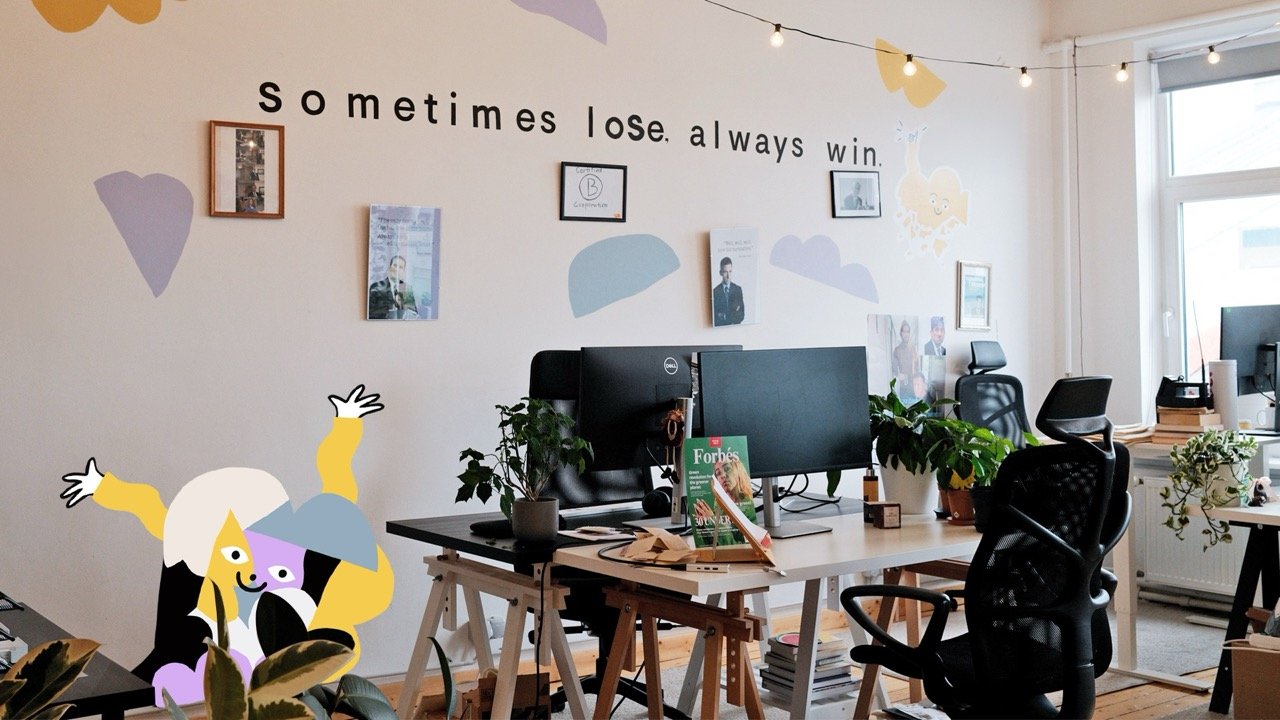How we keep our people safe in the workplace at Woola
Nearly 3 million work accidents that cause physical or mental harm happen in the EU every year. No one wants accidents to happen in the workplace, and it is possible to prevent them.
Woola is a production startup where safety isn’t just a policy on paper — it’s something we keep in mind in everything we do. As a growing business with employees working across diverse environments — from our factory floor to office spaces and remote home setups — ensuring safety means we address unique challenges and potential risks in each setting.
In this article, we cover how we at Woola think about workplace safety and some of the steps we take to protect our team.
Different environments = different approaches to safety
While both office and factory environments require strong safety measures, the nature of risks differs significantly. To identify the specifics of each work environment, we hired an external consultant to help us with this task.
In a factory, hazards are often physical and immediate: moving machinery, high noise levels, and heavy lifting demand strict protocols, protective gear, and constant vigilance.
Even a momentary lapse in concentration can result in serious injury.
On the other hand, office safety concerns tend to be more subtle but still significant, including ergonomic strain, trip hazards, fire safety, and mental health challenges.
Long-term issues like poor posture or high stress levels can gradually harm employee well-being.
Recognising these differences enables us to tailor our safety approach, ensuring that both environments support productivity without compromising health.
Factory safety: protecting the production team
Our factory is the heart of our operations: it’s where production happens, ideas take physical form, and deadlines meet their makers. The factory’s dynamic nature makes it crucial to prioritise safety.
We have skilled and experienced employees on our team. However, the daily grind can often blunt people's observational skills and reflexes, leading to a higher risk of accidents.
Here are the key measures we’ve implemented to ensure our factory team’s safety specifically:
1. Thorough training
Every factory team member receives comprehensive production training when they join Woola. We cover equipment usage, safety protocols, risk analysis results, and emergency procedures.
This ensures everyone is prepared to act swiftly in case of an incident. Without proper training, there’s a higher risk of accidents such as equipment misuse or delayed responses during emergencies.
2. Personal Protective Equipment (PPE)
Providing high-quality PPE like gloves, helmets, safety glasses, and protective footwear is non-negotiable. Injuries from flying debris, sharp objects, or chemical exposure can be mitigated with proper gear. We continuously assess our PPE standards to meet or exceed industry regulations.
3. Machine safety protocols & manuals
All machines are equipped with safety guards and emergency stop mechanisms.
Without these, risks such as entanglement, crushing injuries, or accidental start-ups could occur. Routine inspections and maintenance schedules are strictly followed to minimise the risk of malfunctions.
All machines have operating manuals, as well as a risk analysis that outlines all the possible risks associated with using the machine. Having these resources at hand means that everyone can go over the information whenever necessary to have a refresher.
4. Clear communication channels
Safety concerns can only be addressed if they’re heard. Our team members are encouraged to report hazards or near misses through an open-door policy or via our anonymous reporting form.
Failure to report issues could result in overlooked risks that escalate into major incidents.
We also hold regular 1-on-1 meetings and do quarterly satisfaction surveys where everyone can openly and honestly share their thoughts on their work environment and setup. This enables allows us to stay ahead of potential issues and make meaningful improvements.
Office safety: creating a secure and healthy environment
While the office may not seem as inherently hazardous as a factory, it has its own set of safety considerations. Office spaces must foster physical safety, mental well-being, and ergonomic comfort for our employees to thrive.
We’ve implemented the following in the Woola office:
1. Ergonomic workstations
Prolonged poor posture or repetitive strain injuries are common risks without ergonomic setups. So, we’ve made sure our office team has adjustable chairs, standing desks, and proper monitor placements to help prevent physical strain. Additionally, regular ergonomics workshops remind employees to prioritise posture and movement.
We also pay close attention to lighting, especially because our office is located in Estonia, where there is little daylight during winter and the lighting needs to be adjusted accordingly.
2. Emergency preparedness
Fire drills, evacuation plans, and first-aid kits are vital in an office setting. Neglecting these could lead to chaos during emergencies, increasing the risk of injury.
We’ve installed clearly marked exits, fire extinguishers, first aid manuals, and smoke detectors throughout the space. We even had the whole team trained on how to give first aid.
3. Clean and safe environment
Cleanliness contributes to safety. Routine cleaning and adherence to health protocols help prevent the spread of illness. Ignoring trip hazards like loose cords or uneven flooring could lead to preventable accidents.
4. Mental health support
While this is under the ‘office’ section, it applies to remote and factory team members as well. Stress and burnout can compromise safety and productivity. Unaddressed mental health issues may result in reduced focus, increasing the likelihood of errors or accidents.
We have introduced our internal training, “Woola Talks” sessions, where we bring in specialists to talk about different mental health-related topics and encourage employees to learn and adopt different practices in their daily lives.
We also have 4-day work week during summer months and give every last Friday of the month off to our office team to take a break from screens and focus on recuperating.
Remote work safety: extending the safety net to home offices
The corporate office and home office have many similarities, but there are some specifics we pay special attention to when it comes to working from home.
Remote work offers flexibility but introduces its own challenges. Many employees set up makeshift offices at home, which may not be optimised for safety and productivity. Here’s how we support the safety of our remote team members:
1. Ergonomics for home workstations
We have hired employees in different countries across Europe who don’t have the option of coming to the office regularly. To those employees, we provide stipends for purchasing ergonomic furniture, monitor stands, and other essentials.
Poor setups can lead to chronic back pain, eye strain, or other physical issues. We’ve also put together comprehensive guides on how to set up a proper ergonomic workstation at home, how to keep a good posture while at your desk, stretch during breaks, and so on.
2. Health and wellness resources
This is something that applies to everyone at Woola. Encouraging breaks, promoting movement through sports compensation, and offering additional vacation days help employees maintain physical and mental well-being. Prolonged isolation or lack of movement can lead to mental health challenges and physical strain.
3. Safety check-ins
Periodic surveys and check-ins help us understand and address any safety concerns that might arise in remote environments, just like at the factory and in the office. Without this, unnoticed hazards like inadequate lighting or fire safety risks could persist.
This is especially important for remote employees because we lack insight into their daily situation. Open and honest communication is the only way to get an understanding of potential risks and issues.
Building a culture of safety in the workplace
Safety isn’t just a bunch of rules. It’s part of the company culture. We work hard to create an environment where safety is everyone’s responsibility. By fostering open communication, investing in training, and continuously improving our policies, we aim to keep our team safe and productive, no matter where we work.
As we grow, our commitment to safety will remain a priority. After all, our people are our greatest asset, and their well-being is essential to our success.







